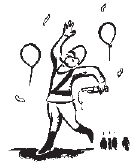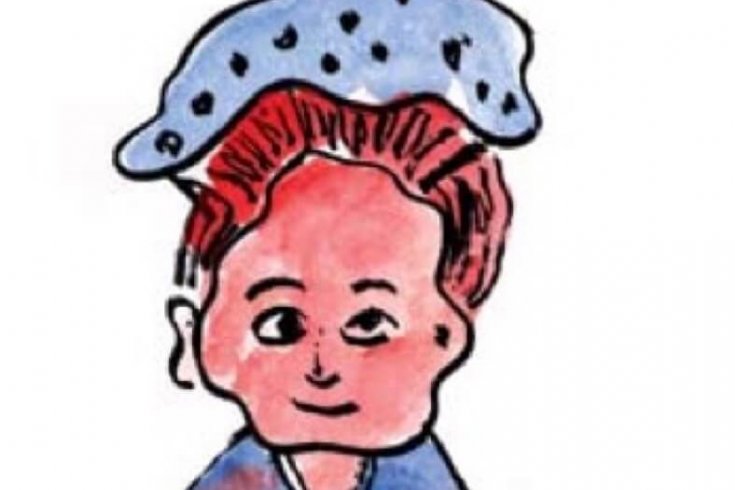He’s not the kind of person you’d think the police would want to spend time with, much less invite to a private get-together. After all, Thomas Sophonow is one of the disturbing number of wrongly convicted people in Canada—a victim of police and prosecutorial misconduct.
In 1982, Winnipeg police arrested Sophonow, then twenty-nine, for strangling a sixteen-year-old doughnut-shop waitress named Barbara Stoppel. In the course of their investigation, they used dubious eyewitnesses and even more dubious jailhouse informants, ignoring other leads in a classic case of tunnel vision. Sophonow was tried three times, resulting in one hung jury and two convictions that were overturned on appeal. He was incarcerated during this time, emerging after his second appeal, an outright acquittal in 1985, a broken man, shunned by many as a murderer who got off on a technicality. For years, Sophonow vainly proclaimed his innocence, but it was only in 2000—fifteen years later—that police finally cleared him and announced that they had a new suspect.
With that kind of history, it was sur-prising to see Sophonow listed as a speaker at the Vancouver Police Homicide Investigators Conference last fall, alongside people such as the lead investigator on the Laci Peterson murder case and the officer who’d tracked Washington’s infamous Beltway snipers. But to their credit, police are starting to concede that although, as the old Mountie slogan put it, they always get their man, their man is sometimes the wrong one.
Detective Rob Faoro, an eight-year veteran of the Vancouver Police Department’s homicide squad and one of the conference organizers, said they wanted Sophonow to shake up the crowd. “He’s real. He’s not somebody I read about in the paper,” Faoro said. “If we can see the guy in person, if we can live it and feel it, maybe we can think twice the next time.”
And there will be a next time, because good police officers know that even with recent advances in dna technology, mistakes get made. There are no hard numbers of the wrongly convicted, but a handful of famous cases—Donald Marshall, David Milgaard, Guy Paul Morin, and Steven Truscott among them—have led to various inquiries and reviews, which have recommended measures such as taping interviews of suspects and banning the use of jailhouse informants. Implementation has been spotty at best.
Outside the conference room in Vancouver, a fidgety Sophonow was rethinking his decision to appear. He doesn’t particularly like police officers, much less 250 of them. “I’d blow up in fits of rage,” he said of the aftermath of his arrest and trials. “Over nothing. I’d feel it coming on. Up my back and up the back of my hair—and I’d just blow up. It would last for a few seconds and then I’d be normal again.”
Once inside, Sophonow spoke faintly and haltingly to the assembled homicide hunters. “You ever get that really nauseous feeling in the pit of your stomach?” he asked them. He told them he’d felt that way once when looking at a poster of a smiling police officer holding the hand of an adoring little girl. “I made a promise to myself that my kids would never believe the propaganda that was put out.”
This was not going to be a “let bygones be bygones” speech. The officers and prosecutors squirmed as Sophonow recounted how few of his co-workers would talk to him at the machine shop where he laboured for fourteen years. On one occasion, someone literally pinned the label “murderer” on his work overalls. “I would stand by the machine 100 times a day and curse the cops who did this to me,” he said. “May each and every one of them burn in hell for all eternity.” In the depths of his despair, he told the crowd, he’d plotted to blow up a police station, though he never followed through.
Sophonow described how his own house in New Westminster was firebombed in 1995; no one was ever arrested or charged. He held back sobs, breathed heavily, and brought a finger nervously to his mouth.
“Dead silence, right?” he observed wryly. “After years of therapy, I can sleep now,” he concluded.
After the speech, Sophonow hovered in a corner, alone. Finally, a young woman approached and asked to shake his hand. “I think you’re very brave and very strong,” she said, adding that she was a crown prosecutor. Sean Trowski, a detective for five years and one of the conference organizers, felt that Sophonow’s unsettling message had gotten through: “I think it’s a very important lesson for every single guy in this room to think about.”
Sophonow said he is thinking of becoming a regular on the police lecture circuit. He spoke to a convention of crown prosecutors in Whistler last summer and also addressed an rcmp training session in Chilliwack. “I hope they take to heart what I have to say and remember what happens to real people because of tunnel vision,” he said.
In 2001, Sophonow was awarded $2.6 million in compensation from the city of Winnipeg and the provincial and federal governments. He used the money to buy a 9,000-square-foot heritage home in New Westminster, which he is restoring brick by brick. “I’m still on the basement in rebuilding my life,” he said. “I tried to let it go, but you really can’t. You really can’t. The anger is still there. I’m not over it.”
Jon Frum Day: February 15
Tanna Island, Vanuatu

When European imperial powers settled Vanuatu in the nineteenth century, they brought visions of unattainable wealth to the South Pacific island’s tribal groups. These visions, coupled with the messianic themes taught by Christian missionaries, led to the development of “cargo cults”—religious groups believing that fealty to a particular god, hero, or ancestor would usher in a new age of blessings in the form of material goods from beyond their shores. One such hero was Jon Frum, the messiah of a still-extant religion. Adherents believe Frum arrived from America in the 1930s, and they celebrate him as a champion of local culture who advised natives to keep singing, dancing, and drinking in spite of missionaries’ directives to pray, pray, pray.
Krishna’s Death: Februrary 18, 3102 BC
Prabhas Patan, India

Shot by an archer who’d mistaken him for a deer, Lord Krishna, the roguish, sensual avatar of Vishnu, preserver of the cosmos, departed for the spiritual planet of Goloka Vrindavana long ago. For centuries, the question of exactly when this occurred was unanswered. But Swami Gyananand Saraswati has determined, using Hindu scriptures, an ancient astrological text, and a computer, that the death took place on February 18, 3102 BC, at precisely twenty-seven-and-a-half minutes after two in the afternoon (fifty-seven-and-a-half after in Newfoundland). If that seems almost too recent, think of it this way: following from seventeenth-century archbishop James Ussher’s similar calculation from the Bible, it’s a mere 902 years after the earth was created.
—Mark Saunders



